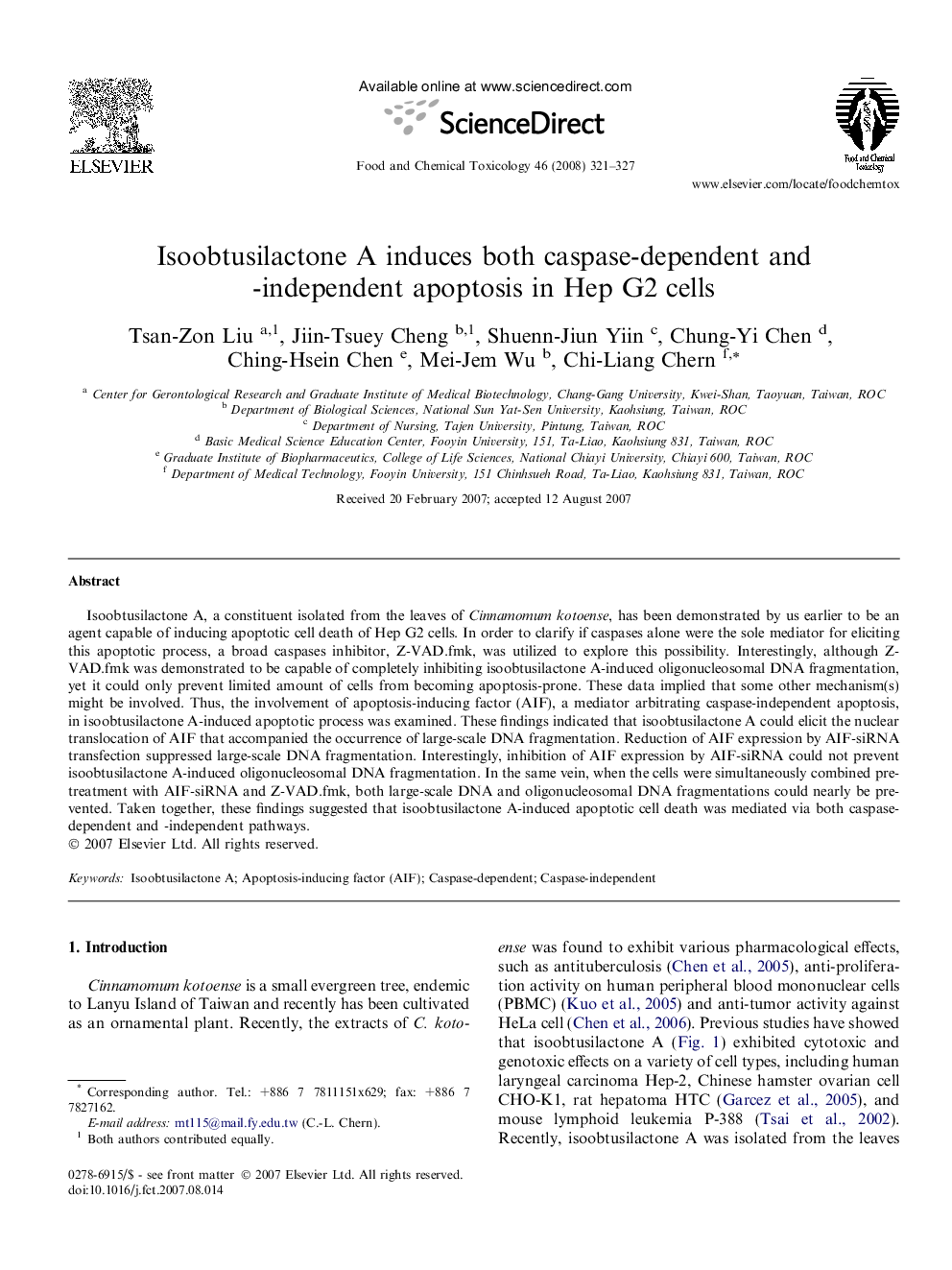| Article ID | Journal | Published Year | Pages | File Type |
|---|---|---|---|---|
| 2586735 | Food and Chemical Toxicology | 2008 | 7 Pages |
Isoobtusilactone A, a constituent isolated from the leaves of Cinnamomum kotoense, has been demonstrated by us earlier to be an agent capable of inducing apoptotic cell death of Hep G2 cells. In order to clarify if caspases alone were the sole mediator for eliciting this apoptotic process, a broad caspases inhibitor, Z-VAD.fmk, was utilized to explore this possibility. Interestingly, although Z-VAD.fmk was demonstrated to be capable of completely inhibiting isoobtusilactone A-induced oligonucleosomal DNA fragmentation, yet it could only prevent limited amount of cells from becoming apoptosis-prone. These data implied that some other mechanism(s) might be involved. Thus, the involvement of apoptosis-inducing factor (AIF), a mediator arbitrating caspase-independent apoptosis, in isoobtusilactone A-induced apoptotic process was examined. These findings indicated that isoobtusilactone A could elicit the nuclear translocation of AIF that accompanied the occurrence of large-scale DNA fragmentation. Reduction of AIF expression by AIF-siRNA transfection suppressed large-scale DNA fragmentation. Interestingly, inhibition of AIF expression by AIF-siRNA could not prevent isoobtusilactone A-induced oligonucleosomal DNA fragmentation. In the same vein, when the cells were simultaneously combined pretreatment with AIF-siRNA and Z-VAD.fmk, both large-scale DNA and oligonucleosomal DNA fragmentations could nearly be prevented. Taken together, these findings suggested that isoobtusilactone A-induced apoptotic cell death was mediated via both caspase-dependent and -independent pathways.
